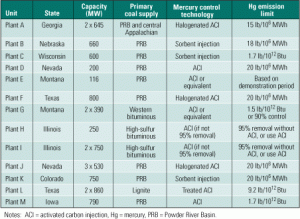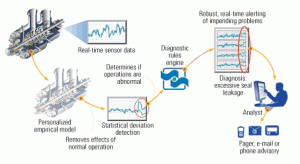In This Issue
-
Smart Grid
Boulder to be first “Smart Grid City”
The next-generation power grid—enhanced by digital technologies throughout the network to give generators, distributors, and customers greater control—promises to improve efficiency and lower operating costs. This year, in the most full-scale effort yet, Xcel Energy begins introducing intelligent grid technologies that it hopes will make Boulder, Colo., the first Smart Grid City.
-
Hydro
A new wave: Ocean power
The idea of harnessing the vast power of Earth’s oceans has tantalized humans for more than a century. Today, the prospect of generating as much as 4,000 TW of clean energy from marine sources is fueling a resurgence of interest in a variety of technologies.
-
Commentary
Smart Grid requires clearing mental gridlock
In mid-2006, a Google search of the term “Smart Grid†generated around 2,000 responses. The same search this past month yielded more than 500,000 hits from a wide variety of sources. The explosiveness of the concept is especially interesting because there is no universal agreement on what constitutes a smart grid—much less agreement on what […]
-
News
Guns and Moses
Charlton Heston’s legacy will surely rest on his iconic performance as Moses in The Ten Commandments and his unwavering support of the Second Amendment. I had the privilege of watching a classic Heston performance at the 2000 National Rifle Association convention in Charlotte, N.C., when he raised a handmade Brooks flintlock above his head and […]
-
Coal
Global Monitor (May 2008)
National Grid divested of Ravenswood/ GE to sell Baglan Bay plant; From prairie grass to power/Renewables experience 40% growth/ The sustainable city/Solar recharger for developing countries/ Seeking CCS solutions/ Hoover Dam could stop generating/ Japan turns to fossil fuels/U.S. reactors produce record power/ POWER digest
-
-
Legal & Regulatory
Why RPS programs may raise renewable energy prices
Until very recently, common wisdom held that the price of renewable energy would fall as legislative procurement mandates ensured its long-term demand. The resulting growth in supply and sales would spur investment in the field, create economies of scale, and accelerate progress down the technology learning curve. Something unexpected, however, happened along the way. Though […]
-
Wind
Regulating wind power into a dispatchable resource
Perhaps the biggest shortcoming of wind power is its unreliability. Unconcerned with human needs, Mother Nature has decided that the wind usually blows strongest at just the wrong times, when electricity demand is lowest. However, using savvy negotiations to exploit a new provision in California’s renewable energy regulatory regime could make wind power more dispatchable during peak-demand periods and increase the capacity of wind farms at the same time.
-
Coal
Future of national mercury rule now uncertain
This February, a federal appeals court tossed out the Clean Air Mercury Rule and its cap-and-trade program and ordered that mercury be regulated more stringently as a hazardous air pollutant. Adding insult to injury, the court made its ruling effective one month later. While the EPA regroups, state energy and environmental regulators will have an opportunity to look closely at recent power plant permits for guidance. This article reviews the technology options and regulatory approach for mercury control used on recently permitted and currently operating coal-fired plants.
-
Instrumentation & Controls
Cation conductivity monitoring: A reality check
The ability to detect contaminated feedwater or steam before it can corrode the internals of a turbine or HRSG and cause a forced outage is worth millions. One knock against cation conductivity monitoring—still the most common technique for the early detection of contamination—is the difficulty of interpreting conductivity readings when the plant’s makeup contains significant levels of organics or CO2. Here are the pros and cons of cation conductivity monitoriting and some alternative monitoring methods.
-
Instrumentation & Controls
Making PM systems sweat the small stuff
Modern predictive maintenance systems can monitor the health of most plant equipment. By sorting through the wealth of information those systems deliver, operators can discern important trends, including the early signs of a system or component failure.












